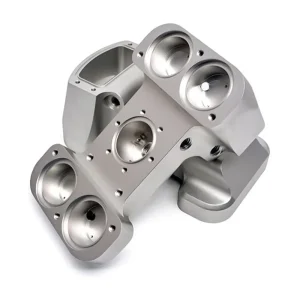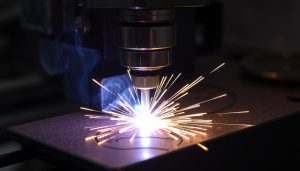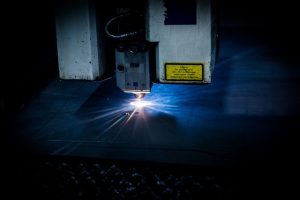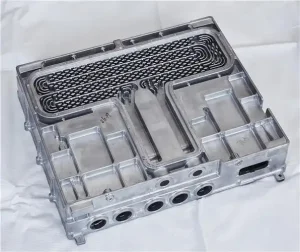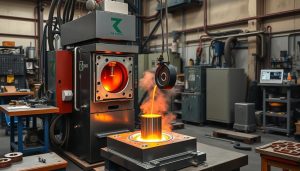In the world of manufacturing, the surface finish of a product plays a crucial role in its functionality, appearance, and overall quality. Achieving the desired surface finish is a delicate balancing act, as it is heavily influenced by the properties of the material being used. From the smooth elegance of polished metal to the rugged texture of sandblasted concrete, the surface finish can make all the difference in the final product.
Exploring the relationship between material properties and surface finish is essential for understanding the nuances of manufacturing techniques. Each material has its own unique characteristics that determine the best approach to achieving the desired surface quality. This section will delve into the intricacies of surface finishes, examining how they vary across different materials and the factors that contribute to these variations.
What is Surface Finish and Why Does It Matter?
In the world of manufacturing, the surface finish of a material is a critical factor that can significantly impact both the product’s performance and its overall aesthetic appeal. Surface finish, often referred to as surface texture, refers to the topographical characteristics of a material’s surface, including its roughness, lay, and waviness.
Key Components of Surface Finish: Roughness, Lay, and Waviness
The surface finish of a material is determined by three key components:
- Roughness: This refers to the microscopic irregularities on the surface, such as peaks and valleys, which can affect the material’s surface texture.
- Lay: Lay describes the direction of the predominant surface patterns, which can be influenced by the manufacturing process.
- Waviness: Waviness encompasses the larger, undulating surface patterns that can be caused by factors like machine vibrations or material deformation.
The Impact of Material Type on Surface Finish Quality
The material characteristics of a product can have a significant impact on the achievable surface finish quality. Different materials, such as metals, plastics, and composites, have inherent properties that can make them more or less susceptible to achieving a high-quality finish quality. Understanding these material-specific factors is crucial in selecting the appropriate manufacturing processes and techniques to optimize the surface finish.
The Role of Material Properties in Determining Surface Finish
When it comes to surface finishing, the properties of the material play a crucial role in determining the final outcome. The surface texture, or surface roughness, of a finished product is heavily influenced by the inherent characteristics of the underlying material, such as its hardness and material properties.
How Different Materials Affect Surface Texture
Materials with varying compositions and structures exhibit distinct surface textures when subjected to the same finishing processes. For instance, metals like steel tend to have a smoother surface finish compared to softer materials like aluminum or brass. The density and crystalline structure of the metal can impact how it responds to techniques like polishing, grinding, or milling.
On the other hand, plastics and composites often display a wider range of surface textures, from matte to glossy, depending on their formulation and manufacturing process. The surface energy of these materials can significantly influence the final surface finish.
Material Hardness and Its Effect on Surface Finishing
The hardness of a material is a critical factor in determining the quality and ease of the surface finishing process. Harder materials, such as hardened steel or ceramics, can withstand more aggressive finishing techniques without compromising the desired surface texture. Softer materials, like certain polymers or non-ferrous metals, may require gentler methods to avoid unwanted surface deformations or damage.
| Material | Hardness (Rockwell Scale) | Typical Surface Finish |
|---|---|---|
| Hardened Steel | 50-60 HRC | Smooth, mirror-like finish |
| Aluminum | 20-30 HRC | Matte or satin finish |
| Acrylic Plastic | 85-95 Rockwell M | Glossy, high-gloss finish |
Understanding the relationship between material properties, surface texture, and hardness is crucial for manufacturers and designers to achieve the desired surface finish for their products, whether they are made of metals, plastics, or composites.
Common Types of Surface Finishes and Their Applications
When it comes to surface finishes, the spectrum ranges from smooth and polished to rugged and textured. The choice of surface finish often depends on the material being used and the desired aesthetic or functional properties. Let’s explore the world of smooth and rough finishes, and how they find practical applications across various industries.
Smooth vs. Rough Finishes
Smooth finishes, characterized by their sleek and refined appearance, are often associated with high-end products and luxury applications. These finishes minimize surface irregularities, providing a visually appealing and tactile experience. Smooth finishes are commonly seen in stainless steel appliances, chrome-plated fixtures, and high-gloss painted surfaces. On the other hand, rough finishes introduce intentional texture and surface variations, offering a more industrial or rustic aesthetic. Rough finishes are prevalent in construction materials, such as exposed concrete, weathered wood, and textured ceramic tiles.
Examples of Materials with Different Surface Finishes
- Metals like aluminum, brass, and copper can be polished to a mirror-like shine or left with a matte, rough finish to showcase their natural characteristics.
- Plastics can be molded to achieve a wide range of surface textures, from smooth and glossy to rough and tactile, depending on the intended application.
- Ceramics and natural stones offer a diverse array of surface finishes, from smooth and polished marble to rugged and weathered limestone.
The choice of surface finish can significantly impact the overall aesthetic, functionality, and durability of a product or material, making it a critical consideration in design and manufacturing processes.

Surface Finish Improvement Methods
Achieving the desired surface finish is crucial for the performance and aesthetics of various products, whether they are made of metals, plastics, or composites. Fortunately, there are several techniques available to enhance surface finishes and optimize the overall quality of the material.
Techniques for Enhancing Surface Finish on Metals
For metal components, traditional methods such as grinding, polishing, and honing can significantly improve the surface finish. These processes remove irregularities and create a smooth, uniform appearance. Additionally, advanced techniques like electropolishing and chemical etching can further refine the surface, offering a mirror-like finish.
Surface Finish Optimization for Plastics and Composites
Improving the surface finish of plastic and composite parts requires a different approach. Techniques like mold polishing, laser texturing, and chemical treatment can be employed to achieve the desired surface characteristics. These methods can enhance the aesthetic appeal, reduce friction, and even improve the material’s resistance to wear and tear.
Selecting the appropriate surface finish improvement method is crucial and depends on factors such as the material properties, manufacturing process, and the intended application. Consulting with experts in the field of surface improvement, metal finishing, and plastic optimization can help ensure the optimal solution for your specific needs.
| Technique | Material Suitability | Key Benefits |
|---|---|---|
| Grinding and Polishing | Metals | Smooth and uniform surface finish |
| Electropolishing | Metals | Mirror-like, high-quality surface |
| Mold Polishing | Plastics and Composites | Improved aesthetic appeal and reduced friction |
| Laser Texturing | Plastics and Composites | Enhanced wear and tear resistance |

“Achieving the perfect surface finish can make all the difference in the performance and overall quality of a product.”
Factors Influencing Surface Finish During Manufacturing
The quality of a product’s surface finish is not solely determined by the material itself, but also by the manufacturing processes involved. Understanding the factors that influence surface finish during manufacturing is crucial for achieving the desired results.
The Importance of Geometry in Surface Finish Variation
The geometry of the product design plays a significant role in the final surface texture. Complex shapes and intricate features can create challenges in the manufacturing process, leading to variations in surface finish across different areas of the product. Manufacturers must carefully consider the geometric design and its impact on the selected manufacturing processes to ensure consistent and high-quality surface finishes.
How Manufacturing Process Affects Material Surface Texture
The choice of manufacturing processes can have a direct influence on the material’s surface texture. For instance, machining processes like turning, milling, and grinding can produce different surface characteristics depending on the tool used, the cutting speed, and the feed rate. Similarly, casting and molding techniques can also impact the final surface finish of the product. Manufacturers must carefully select the appropriate manufacturing process based on the desired surface finish and the material properties.
| Manufacturing Process | Typical Surface Finish |
|---|---|
| Turning | Parallel grooves, surface texture can be influenced by feed rate and tool sharpness |
| Milling | Perpendicular grooves, surface texture can be affected by cutter type and speed |
| Grinding | Smoother surface, surface texture depends on abrasive grain size and wheel speed |
| Casting | Irregular surface texture, affected by mold material and cooling rate |
| Molding | Smooth surface texture, influenced by mold design and material properties |
By understanding the relationship between manufacturing processes, geometry influence, and surface texture, manufacturers can optimize their production techniques to achieve the desired surface finish for their products.
Why Choose Shixinproto for Your Surface Finish Needs?
When it comes to achieving the perfect surface finish, Shixinproto stands out as the go-to partner for manufacturers across a wide range of industries. With our deep expertise in material-specific surface finishing techniques, we deliver unparalleled results that exceed your expectations.
Expertise in Material-Specific Surface Finishing Techniques
At Shixinproto, we understand that each material has unique properties and requirements when it comes to surface finishing. Our team of highly skilled technicians has mastered the art of customizing our processes to achieve the desired finish for metals, plastics, composites, and beyond. Whether you need a smooth, mirror-like surface or a textured, non-slip finish, we have the knowledge and equipment to make it happen.
Comprehensive Solutions for Different Manufacturing Needs
Shixinproto’s commitment to excellence extends beyond just surface finishing. We offer a comprehensive suite of solutions to cater to the diverse needs of our manufacturing clients. From pre-treatment and cleaning to post-processing and quality control, our end-to-end services ensure a seamless experience and consistent, high-quality outcomes every time. When you partner with Shixinproto, you can trust that your surface finish needs will be handled with the utmost care and attention to detail.
